Inside the Denver Zoo's mission to protect Mount Blue Sky's iconic wildlife
The Story
The Mount Blue Sky scenic byway, located in the Colorado Rocky Mountain front range, attracts over 200,000 visitors with its convenient route to the alpine beauty of Summit Lake and the iconic 14er, Mount Blue Sky (formerly Mount Evans).
However, the seasonal influx of human activity has a surprising effect on wildlife. Along with their hiking boots and binoculars, visitors also bring in minerals that prove tempting to local wildlife. Mineral deposits and chemicals on cars, buildings, and asphalt entice bighorn sheep and mountain goats to venture into parking lots and other human areas on the mountain, where they lick these objects to obtain essential nutrients.
As they gather to vie for prime licking spots, goats and sheep come into unnaturally close proximity, creating the risk of disease transmission between species. Equipped with sharp horns and hooves, these herds are also a dangerous temptation to the humans who approach to feed them and pose for selfies.
The Denver Zoo with a grant from the National Geographic Society is working on a long-term project to better understand what minerals are attracting bighorn sheep and mountain goats to human spaces. The results will inform strategies to minimize the presence of bighorn sheep and rocky mountain goats in these areas. In addition, outreach efforts aim to educate visitors about the animals, emphasize safe viewing practices and survey visitor interests and attitudes about Mount Blue Sky and its wildlife.
Through research, education and community engagement, the Denver Zoo Conservation team hopes to safeguard both the wildlife and visitor experience along the Mount Blue Sky scenic byway.

A brazen bighorn sheep (Ovis canadensis) ram confidently approaches the photographer in a parked car along the Mount Blue Sky Scenic Byway.
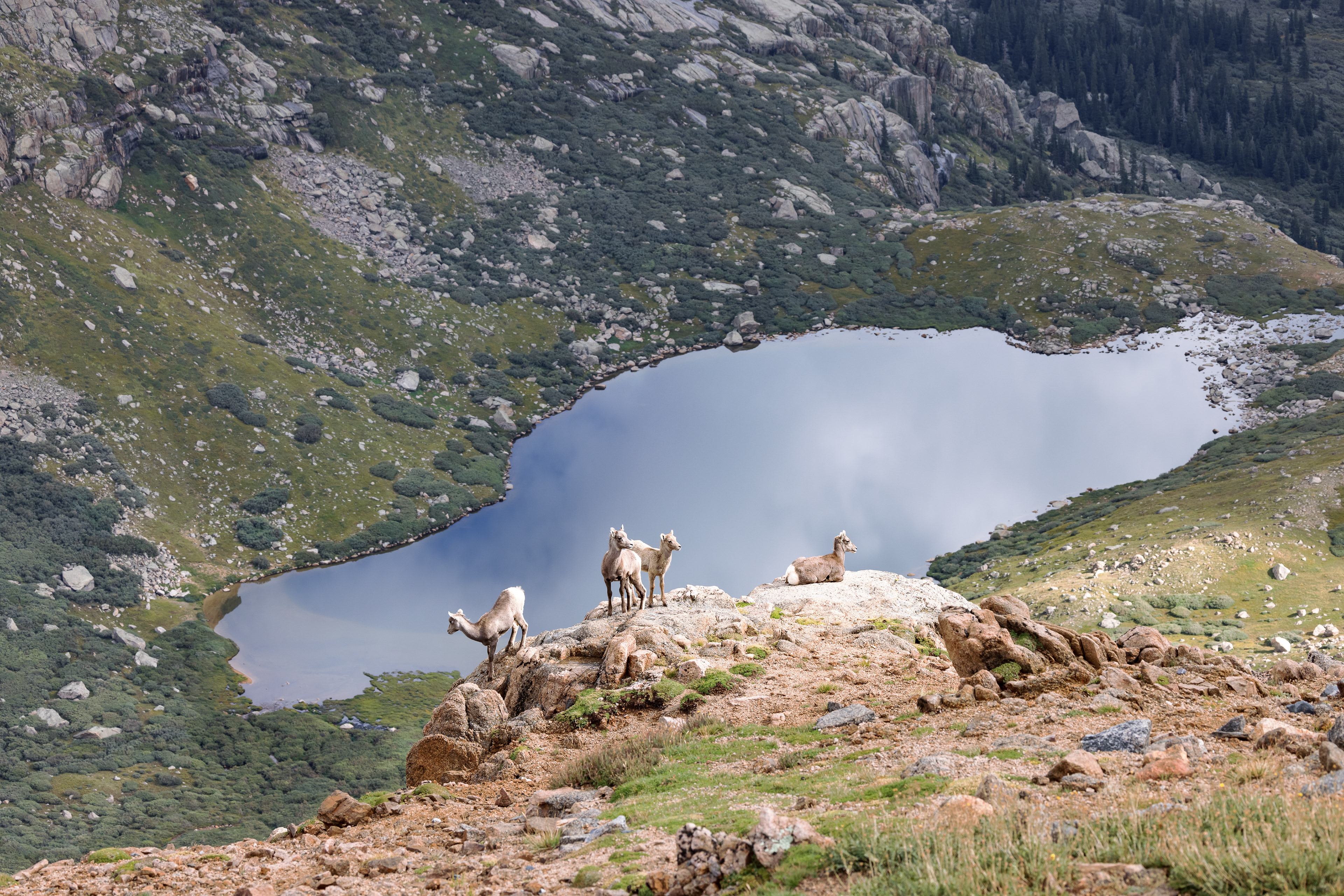
Bighorn sheep (Ovis canadensis) lambs perch on a rocky ledge above Chicago Lakes near the Summit Lake parking lot. In the summer, female bighorn sheep often bring their lambs to Summit Lake to forage on the fresh grasses.
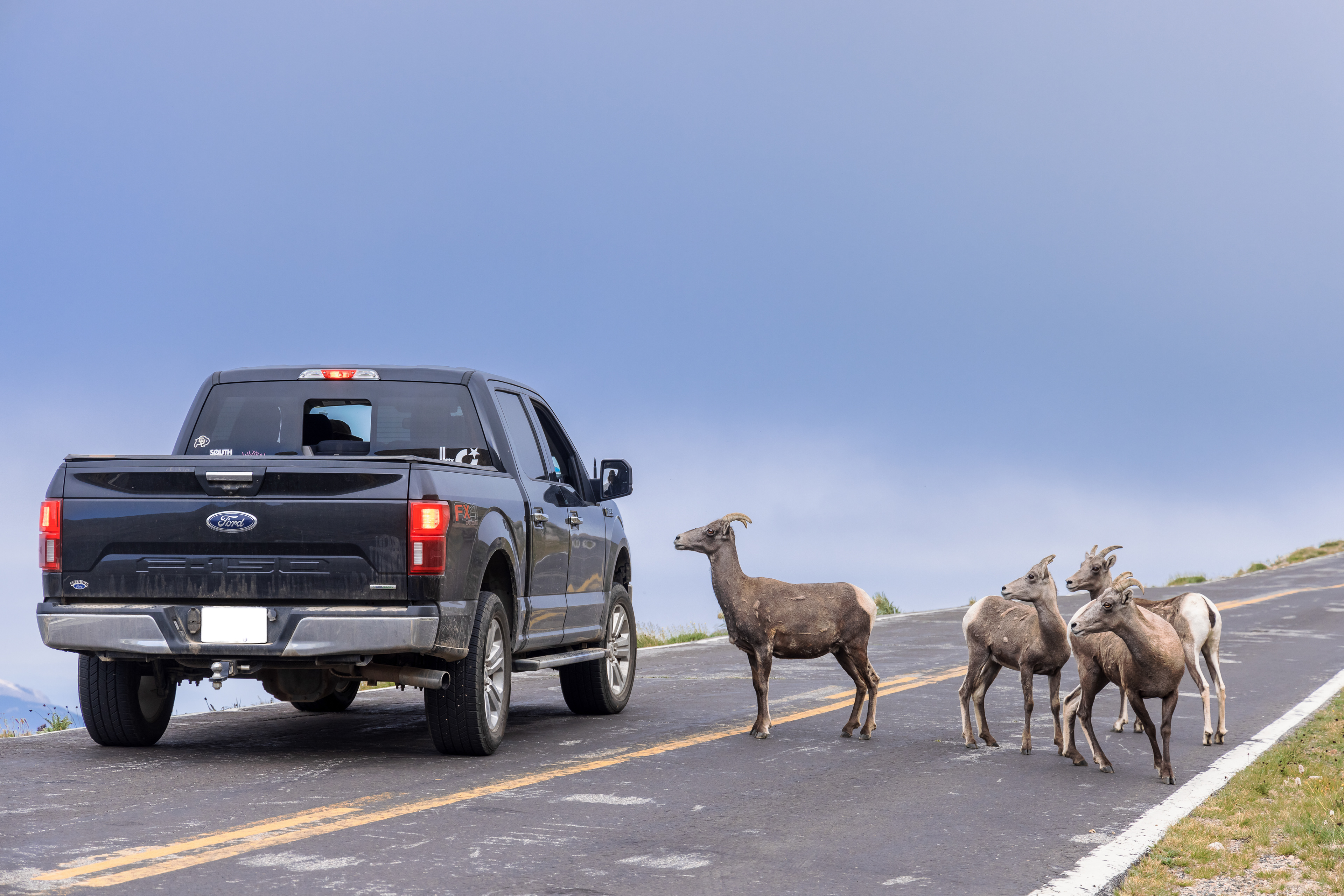
Bighorn sheep (Ovis canadensis) have become accustomed to being fed along the Mount Blue Sky Scenic Byway, often approaching cars expecting a handout. However, human food is harmful for these animals and can lead to illness.
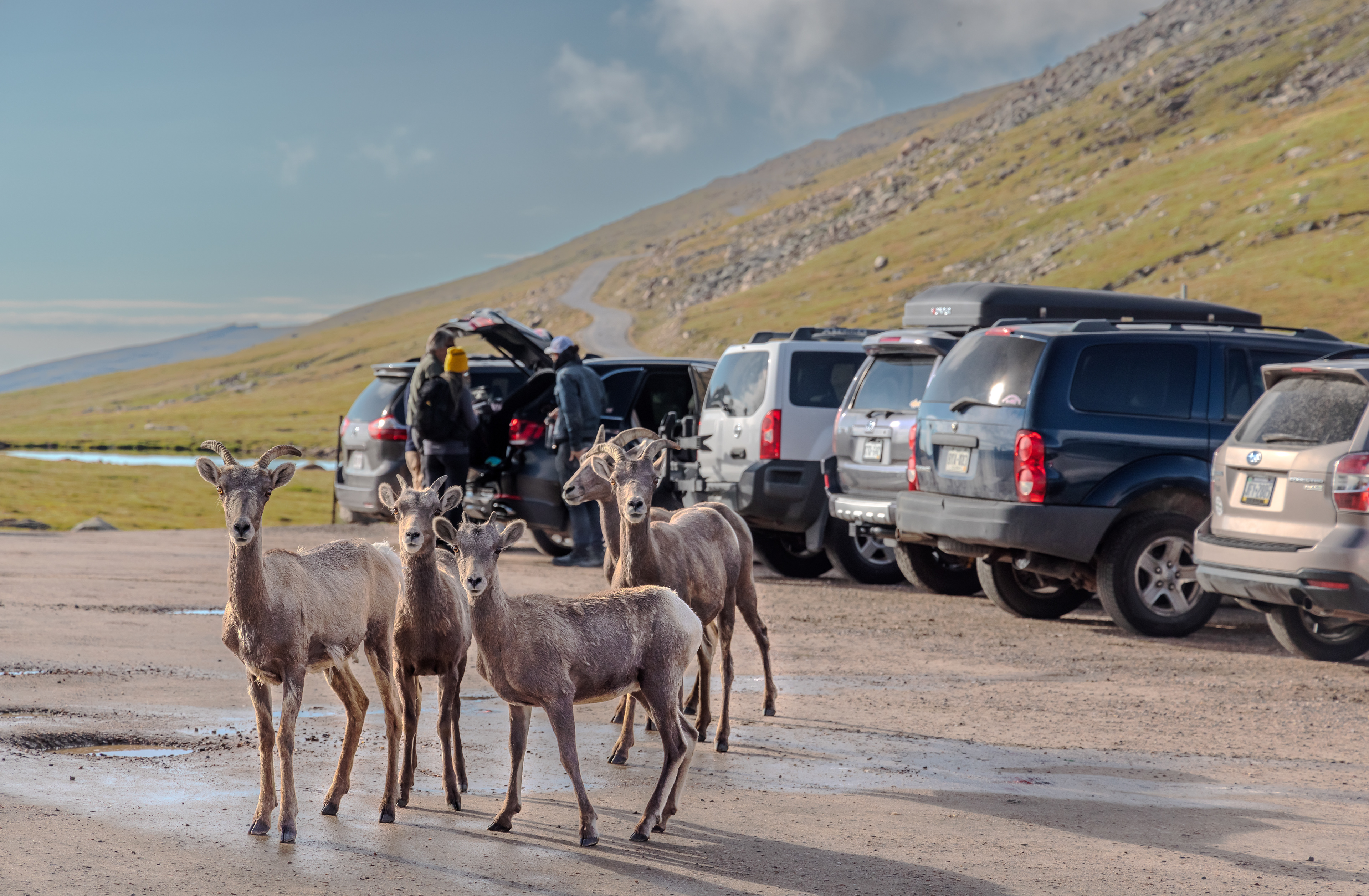
A group of female and juvenile bighorn sheep (Ovis canadensis) congregates in the parking lot, of Summit Lake, below Mount Blue Sky. Once in the parking lot they lick cars and mingle too closely with visitors.
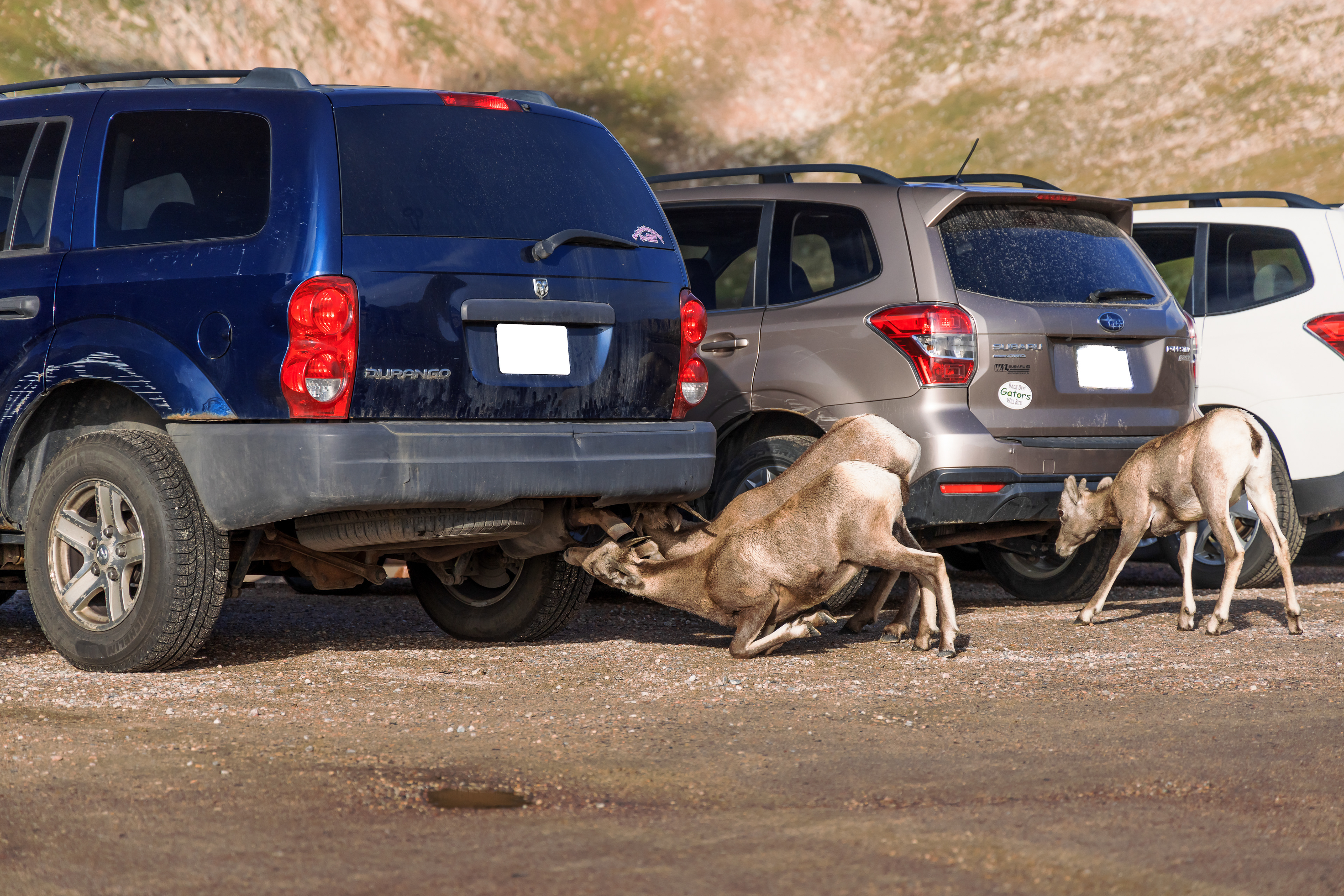
Three bighorn sheep (Ovis canadensis) lick the undercarriage of visitor’s cars in the parking lot of Summit Lake on the Mount Blue Sky (formerly Mount Evans) road in August. The Denver Zoo is conducting research to uncover which minerals or chemicals are drawing these animals to the cars.

Sam Hric, a Denver Zoo conservation specialist, pours mountain lion urine around the Summit Lake parking lot to deter ungulates from congregating in the space. Researchers are developing strategies to keep bighorn sheep and rocky mountain goats from co-mingling and from interacting with humans in the parking lot.

A Rocky Mountain Goat (Oreamnos americanus) lick the asphalt for minerals in front of Summit Lake on Mount Blue Sky Scenic Byway.

Denver Zoo Conservation Biologist Julie Krajewski (right) and CSU Master’s student, Alexis Foster (left) engage in scientific observation of a Rocky Mountain goat at Summit Lake.

A Rocky Mountain goat (Oreamnos americanus) licks the undercarriage of a car parked on the side of the road, on Mount Bluesky road up to the summit, while it’s companion looks on. Both mountain goats and bighorn sheep, are attracted to cars, asphalt and other manmade structures on the mountain for their minerals.

Three bighorn sheep (Ovis canadensis) are seen licking the undercarriages of a visitor's truck in the parking lot of Summit Lake on the Mount Blue Sky (formerly Mount Evans) road in August. The driver patiently waits for the sheep to disperse before driving away.
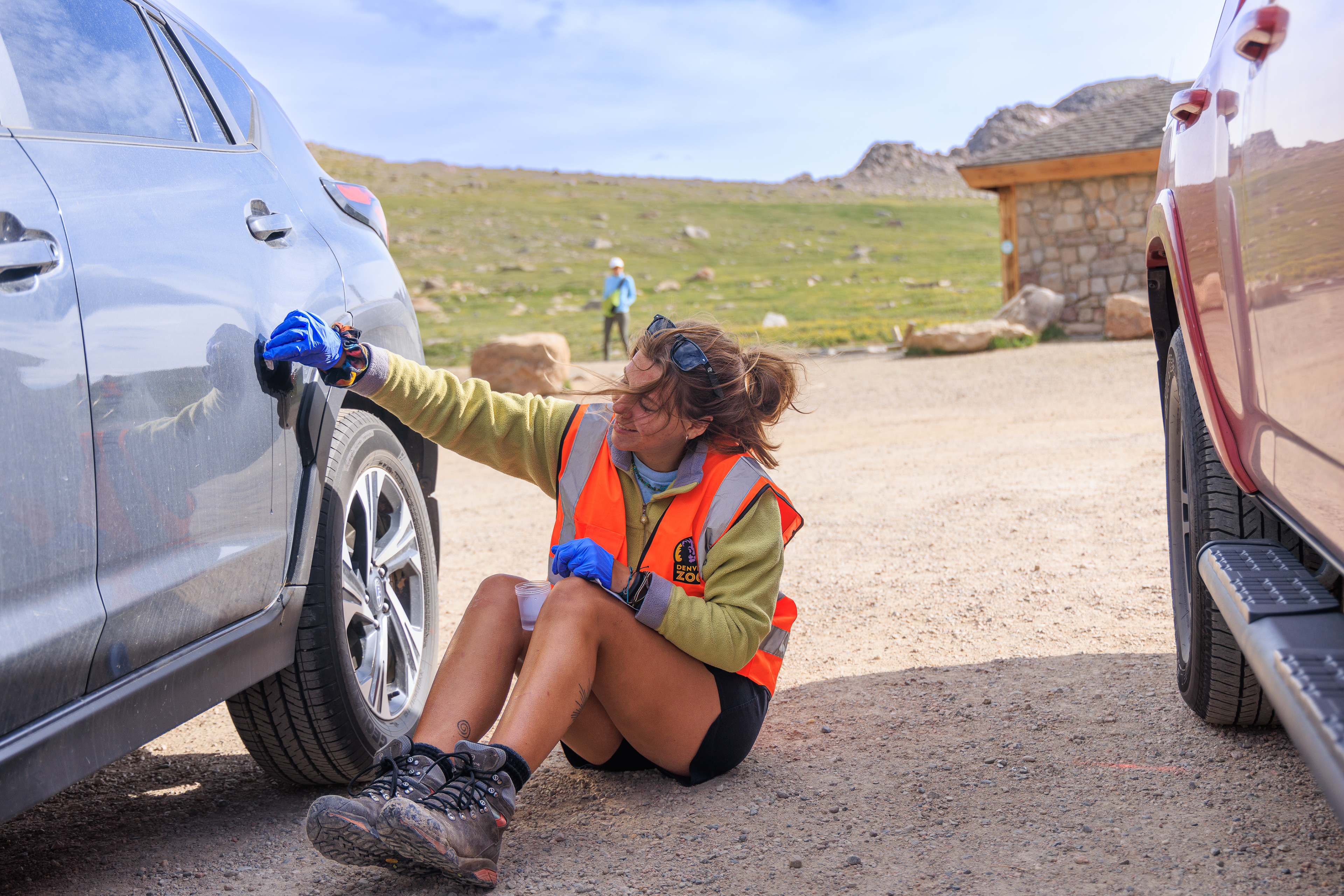
A Denver zoo employee swabs a car in the Summit Lake parking lot. The sample collected will be taken back to the Denver zoo and prepared for analysis. Researchers aim to identify the specific chemicals and minerals that attract ungulates to parking lots and human spaces on Mount Blue Sky.

Denver Zoo Conservation Biologist Julie Krajewski leads the research team that is trying to find out what chemicals and minerals are causing ungulates to congregate in human spaces on Mount Blue Sky.

A group of female and juvenile bighorn sheep (Ovis canadensis) wander up the paved road of the Mount Blue Sky Scenic Byway towards the majestic summit of Mount Blue Sky,, causing a bighorn sheep traffic jam.

"A group of female and juvenile bighorn sheep (Ovis canadensis) stand by the roadside, licking minerals from the ground."
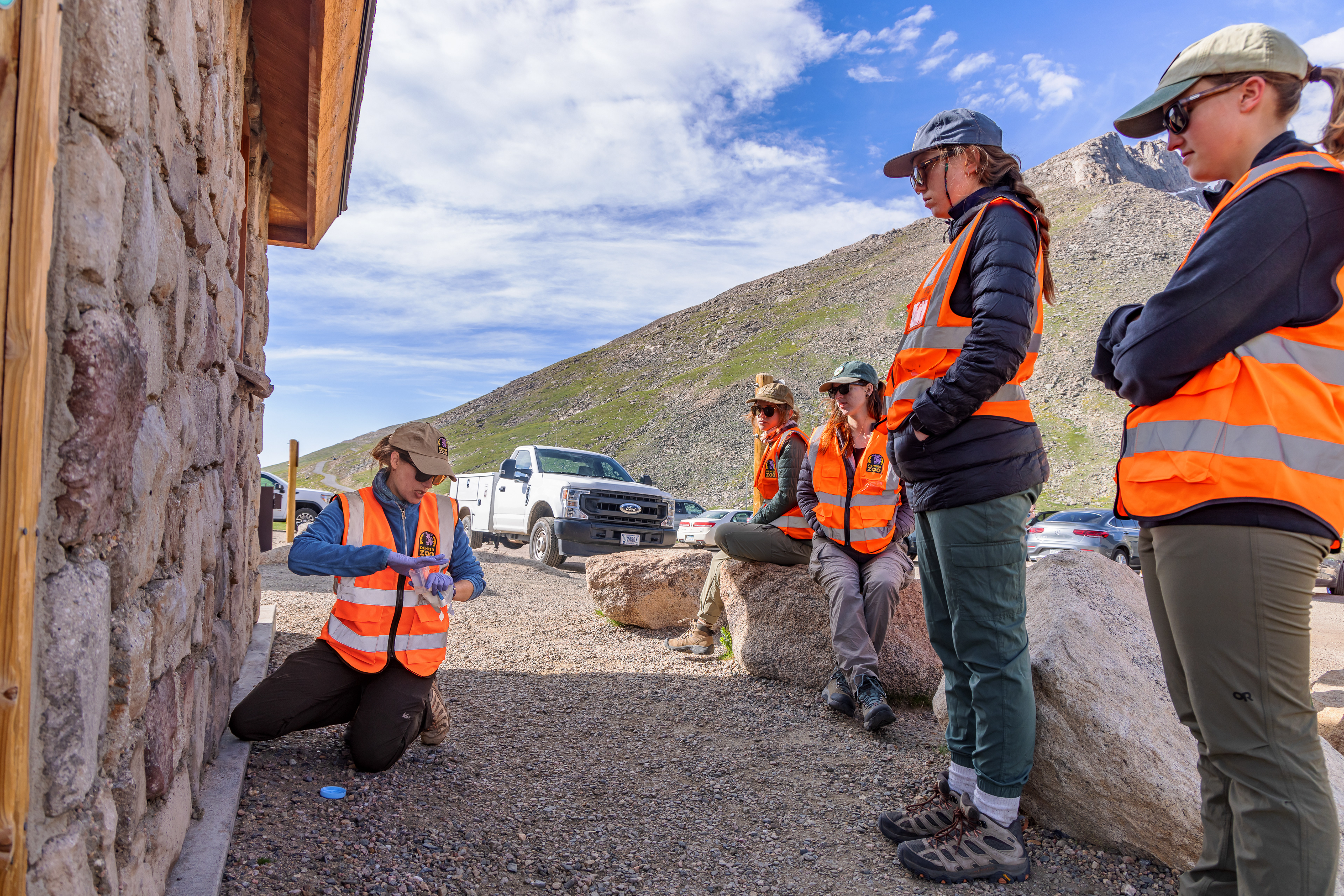
Denver Zoo Conservation Biologist Julie Krajewski instructs her team on how to properly take mineral samples in the field.

Denver Zoo Conservation Biologist Julie Krajewski collects samples of minerals on rocks in an alpine meadow near Summit Lake to act as a ‘control’ in their lab experiment.

A sign at the entrance to the Mount Blue Sky road (formerly Mount Evans) details the weather at the top of the mountain, including wildlife sightings the day.
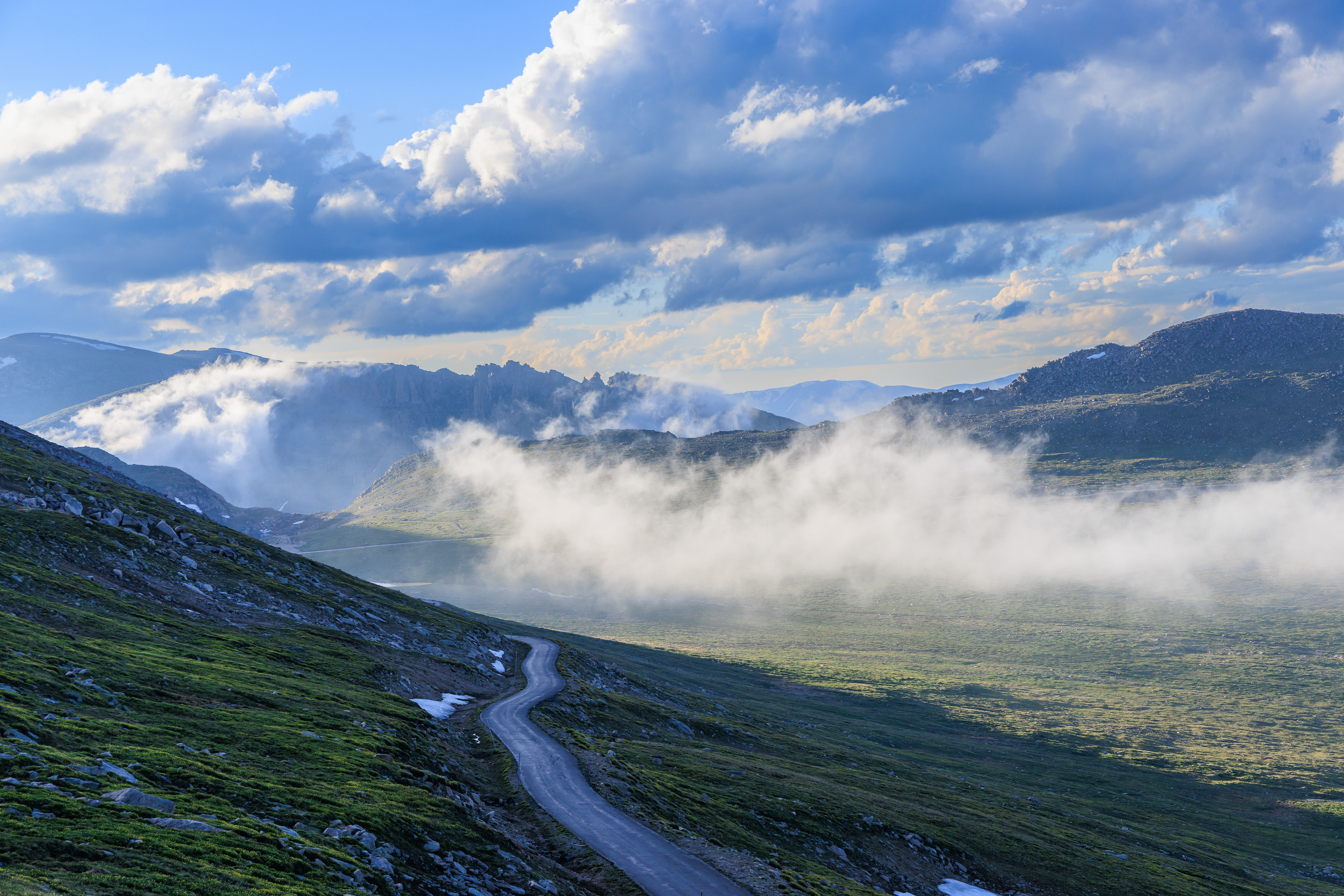
Road view to Summit Lake coming down from top of Mount Blue Sky. The weather can be very dramatic later in the day.
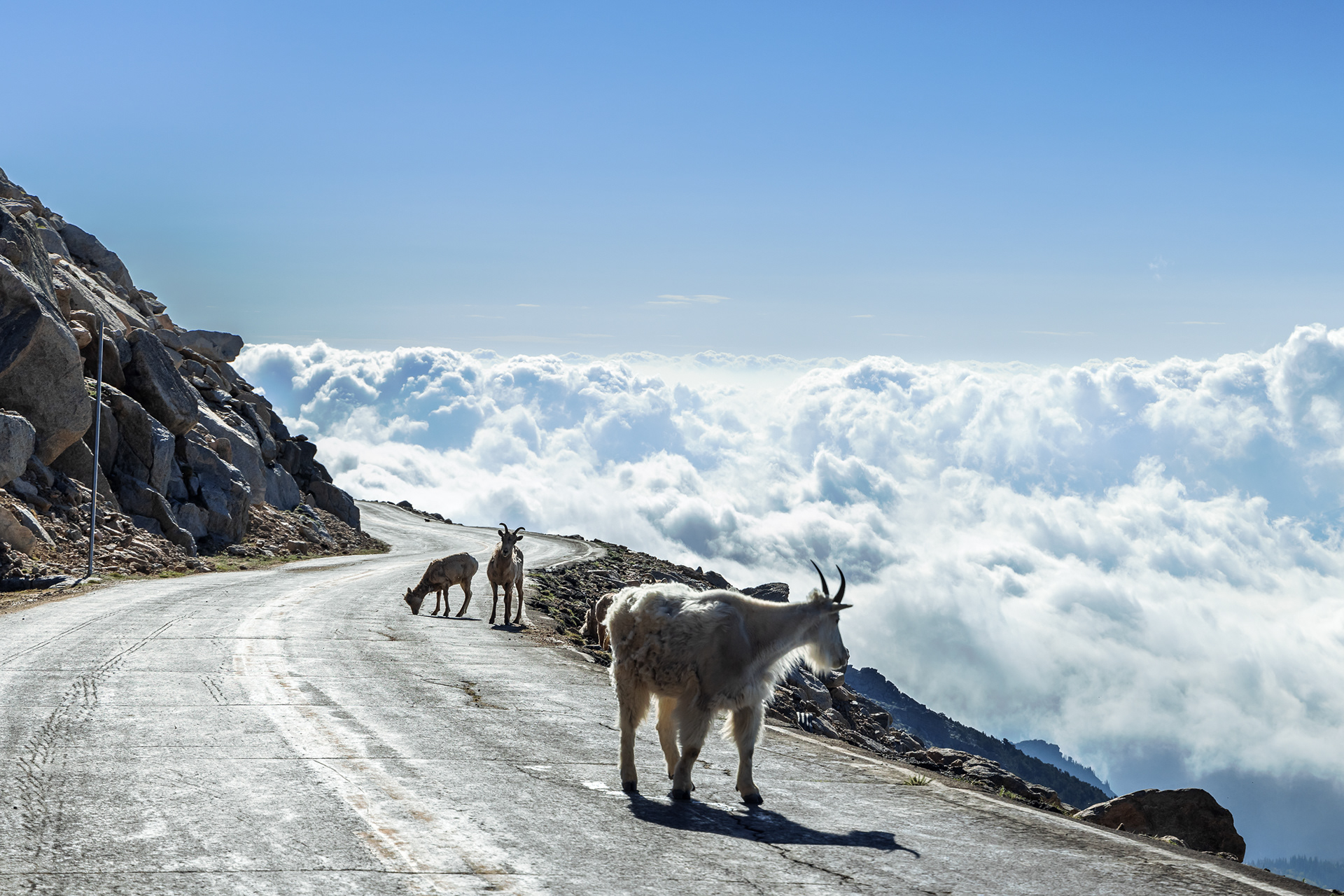
A non-native Rocky Mountain Goat (Oreamnos americanus) ambles up the road up to Mount Blue Sky, seeking minerals or chemicals to lick off of the asphalt. In the background, a watchful female bighorn sheep and her lamb gaze ahead.

A Rocky Mountain goat (Oreamnos americanus) pauses on the side of the road on Mount Blue Sky Scenic Highway before ascending to the rugged cliffs of a nearby peak to find refuge for the night.
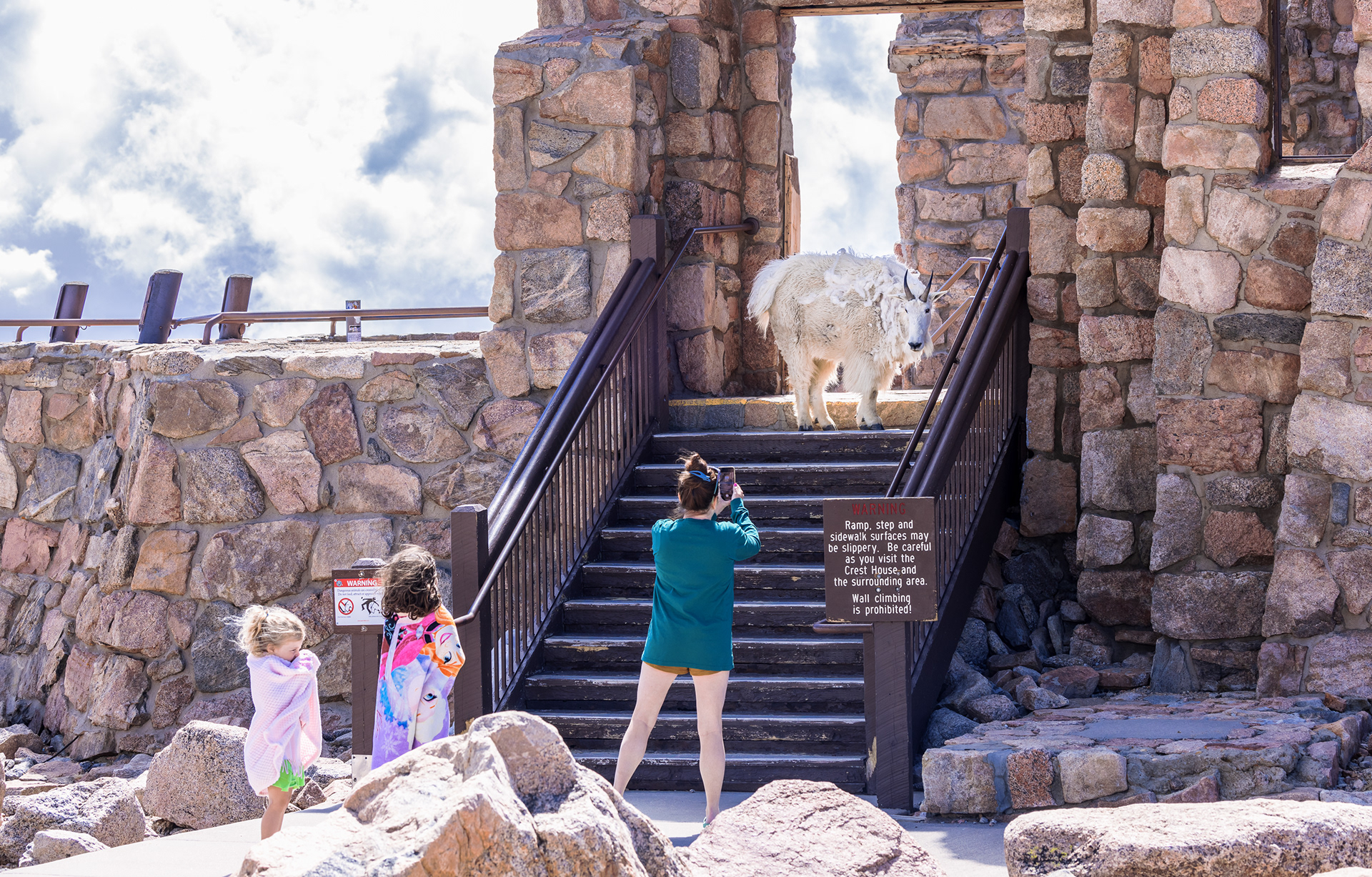
A mother and her children stand uncomfortably close to a Rocky Mountain Goat (Oreamnos americanus) at the ruins of an old restaurant on Mount Blue Sky. Mountain goats, known for unpredictable behavior, may use their sharp horns for protection if they feel threatened.
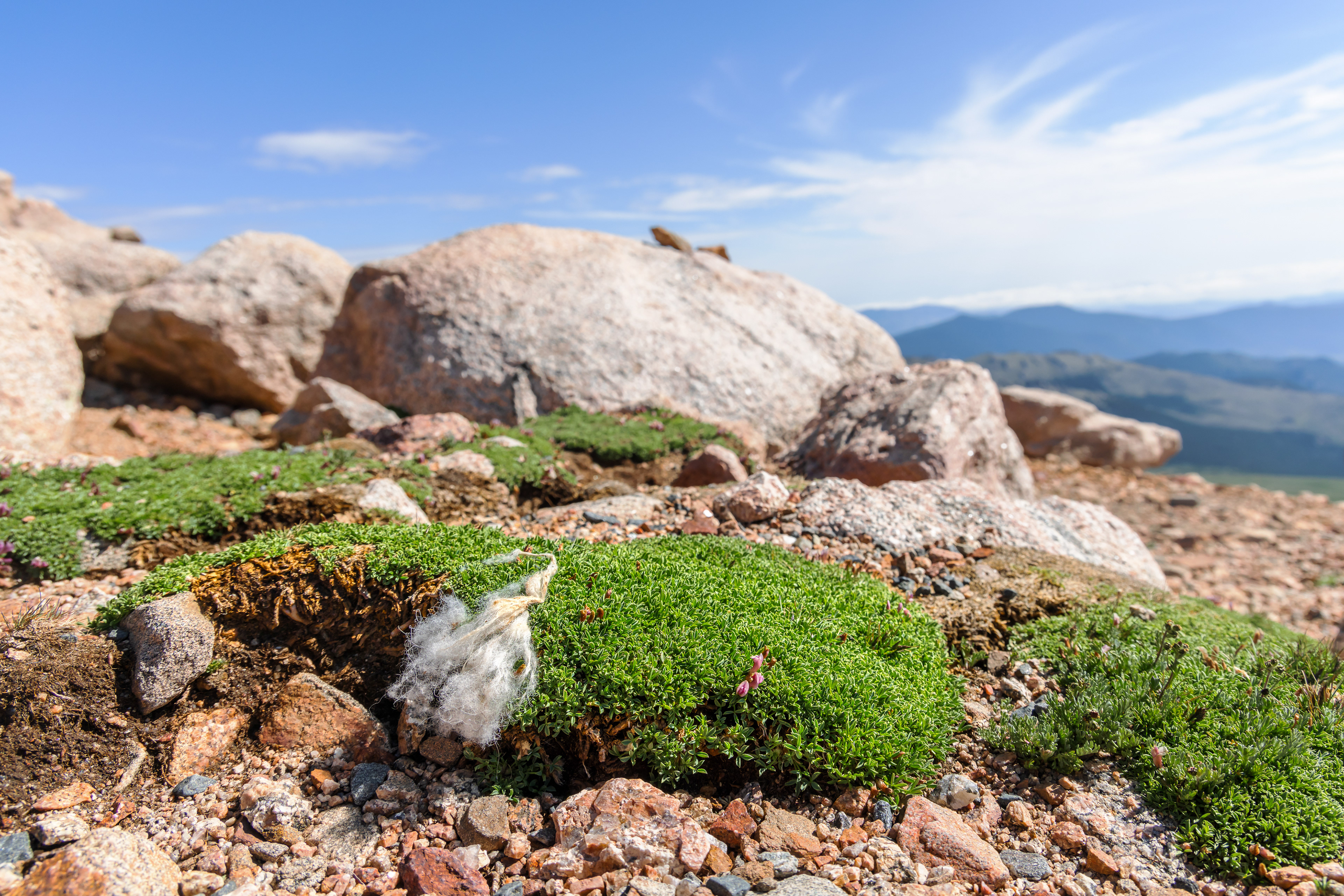
A tuft of mountain goat fur (Oreamnos americanus) clings to a bunch of alpine sandwort. Non-native to Colorado, Rocky Mountain goats are hard on the ecosystem at Mount Blue Sky. They overgraze rare botanical species and their sharp, cloven hooves trample permafrost.

On a chilly morning in early summer, Denver Zoo Conservation Biologist Julie Krajewski and her team set up a trail camera to monitor wildlife behavior.
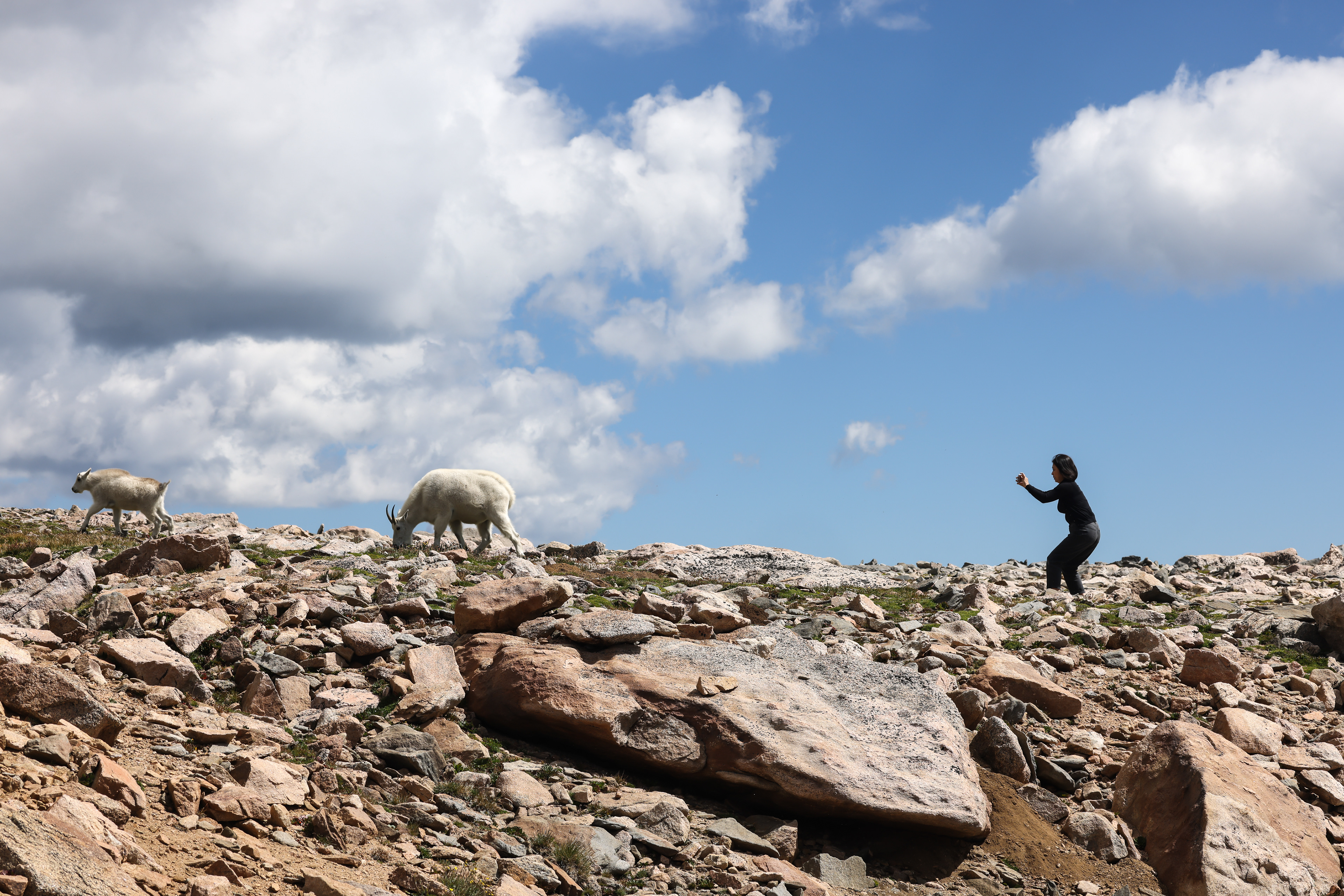
In an attempt to capture a good iphone photo, a visitor to Mount Blue Sky approaches a feeding Rocky Mountain goat (Oreamnos americanus) and her baby, causing them to become nervous and change their behavior. This type of interaction is what the Denver Zoo Conservation team hopes to discourage.
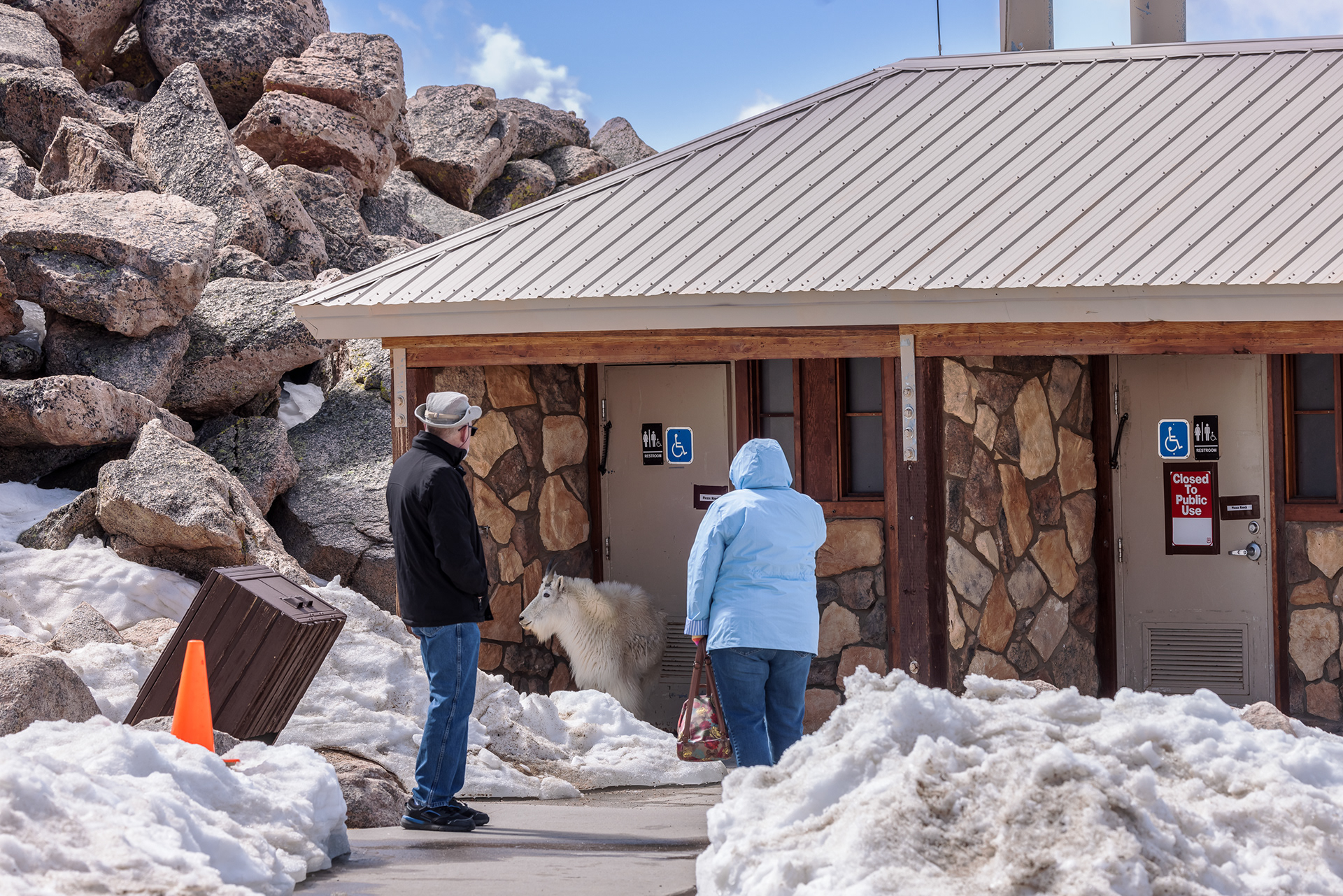
With the only other restroom on Mount Blue Sky closed to the public, a couple patiently waits their turn as a female mountain goat (Oreamnos americanus) inspects the site for tempting places to lick. Rocky Mountain goats are drawn to minerals and chemicals on the stone buildings, as well as any traces of urine or fecal matter around the bathrooms.

Denver Zoo Conservation Biologist Julie Krajewski observes a Rocky Mountain goat (Oreamnos americanus) licking the side of an old research building at the top of Mount Blue Sky. The Denver Zoo conservation team is conducting research to discover the specific chemicals and minerals that attract these animals to man made structures.

At Summit Lake,Denver Zoo Conservation Biologist Julie Krajewski, and a Denver Zoo employee engage with a visitor, educating them about the behavior and conservation of bighorn sheep and mountain goats.
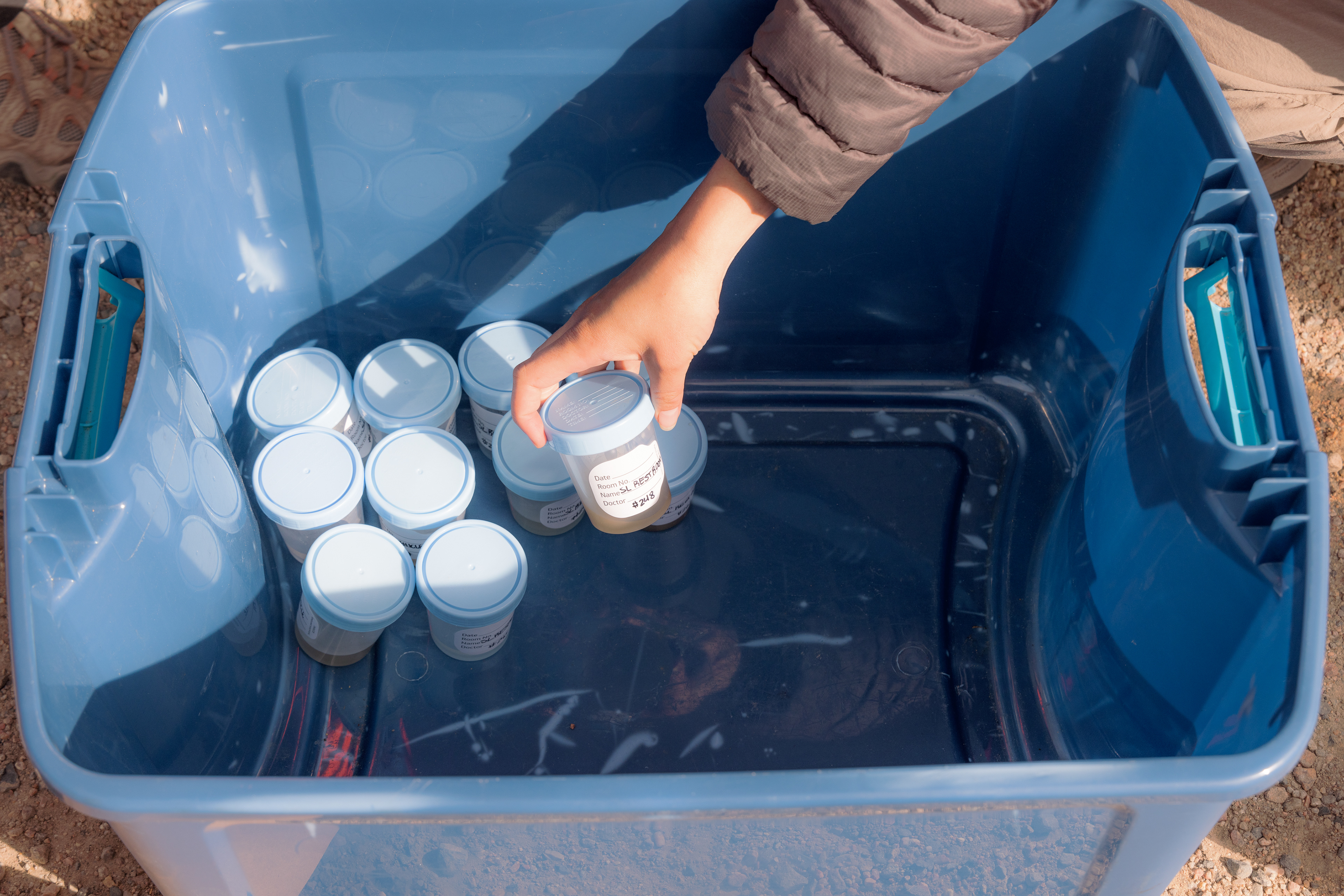
A Denver Zoo employee adds the minerals they collected from the Summit Lake parking lot site to a collection bin. The samples will be transported to the Denver Zoo for preparation and analysis at a local lab.

Denver Zoo Conservation Biologist Julie Krajewski prepares the mineral and chemical samples her team collected from Mount Blue Sky and Summit Lake for analysis at a nearby lab..

Cups filled with mineral and chemical samples are neatly arranged on a lab table at the Denver Zoo, awaiting preparation before being sent to a local lab for analysis.

In an office at the Denver Zoo, Conservation Biologist Julie Krajewski sorts through the plethora of trail cam images she and her crew have collected on Mount blue Sky.
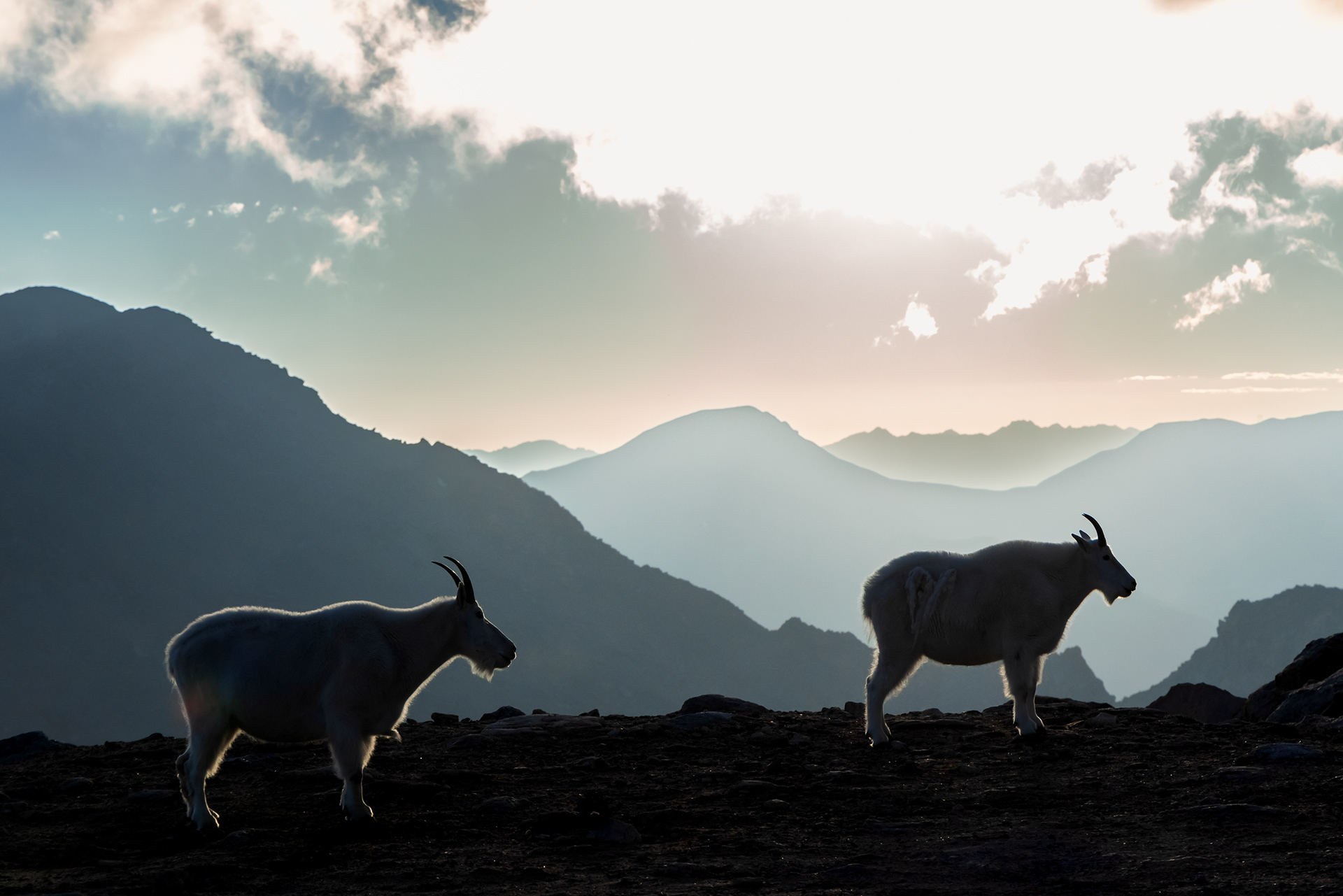
Two Rocky Mountain goats (Oreamnos americanus) silhouetted against dramatic backlighting at dusk on Mount Blue Sky.

Two adorable bighorn sheep (Ovis canadensis) lambs strike am angelic pose on an overlook at Chicago Lakes near Summit Lake. how to

Late in the summer, a bighorn sheep ram (Ovis canadensis) rests in Summit Flats, an alpine meadow next to Summit Lake.
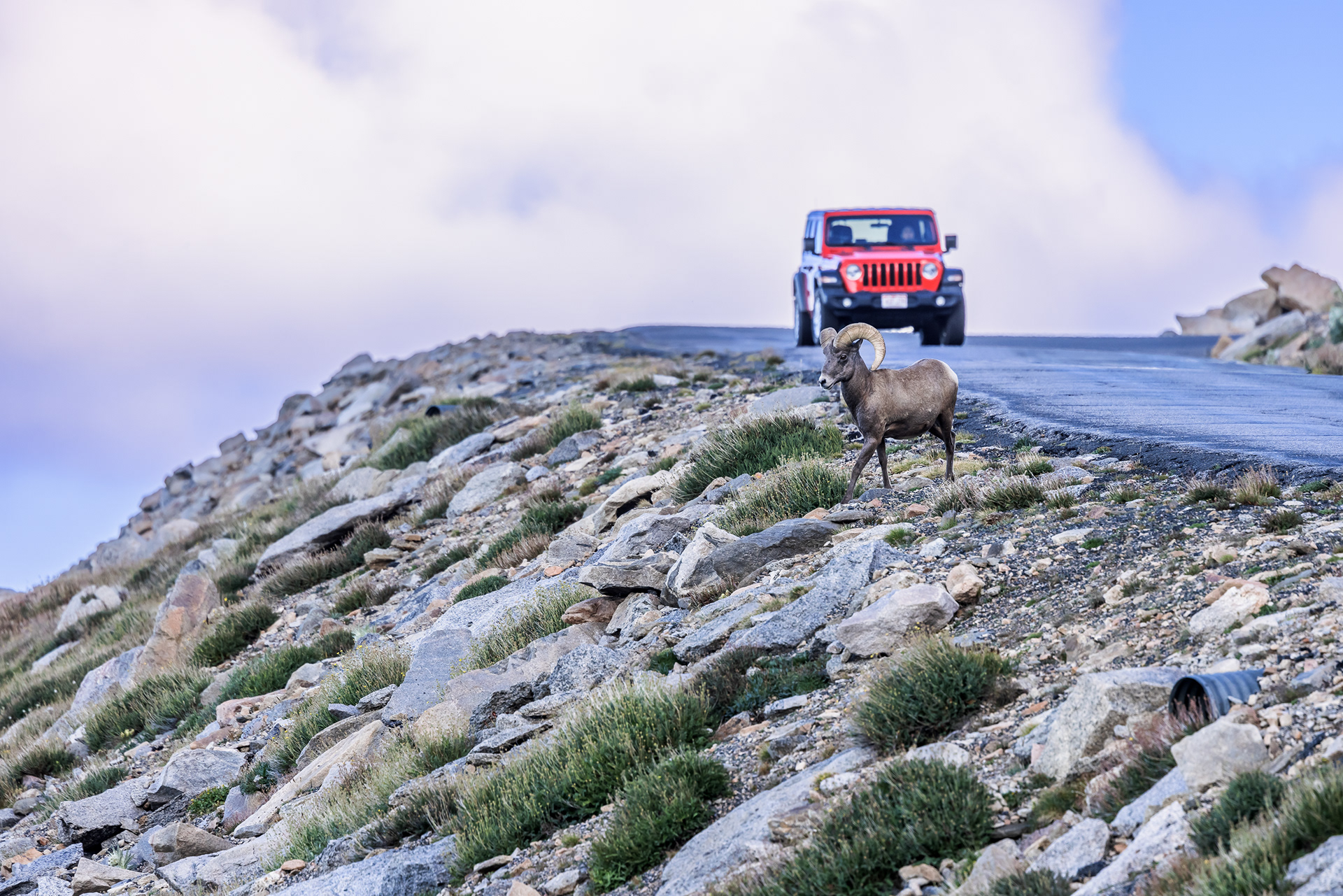
A male bighorn sheep (Ovis canadensis) stops traffic on Mount Blue Sky Scenic Highway as he crosses the road.
